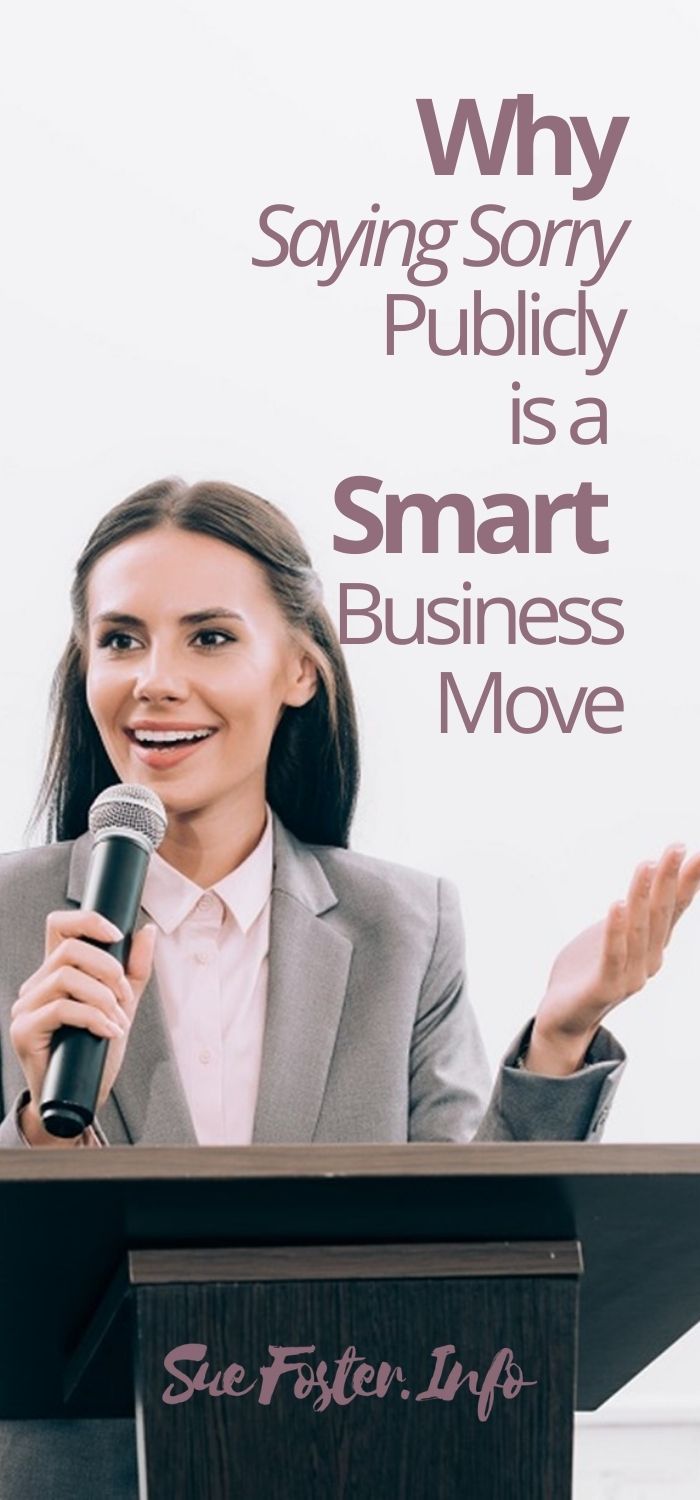Virtually every business will mess up at some point. If a customer complains on social media or leaves a negative review, companies have two options: ignore (and hope that the issue will go away) or respond by apologising.
The answer should be the latter. A news article published in Financial Times found that consumers are less likely to do business with companies that leave complaints unanswered.
Saying sorry is a human behaviour that involves acknowledging the existence of the problem, taking steps to resolve it and making sure that it does not happen again. When done properly, it can preserve customer relationships.

Why Should Businesses Say Sorry?
Apologising is a critical factor in providing stellar service to customers. Saying a sincere and heartfelt sorry displays empathy. This ability allows businesses to understand how their customers are feeling, respond appropriately to the issue and win back their trust.
If the company is facing a legal dispute (or attempting to prevent a complaint from reaching that point), an apology can go a long way. A report from by Jennifer Robbennolt, a Professor at the University of Illinois, revealed that apologies may encourage settlements of legal disputes.
Examples of Proper Corporate Apologies
An example of a well-executed apology comes from Seah Moon Ming, chairman of SMRT. He bowed in public and apologised for what transpired in the Bishan tunnel flooding incident.
Another company that executed a good apology is Sony. In 2011, the company became a victim of a data breach. This resulted in the personal information leakage of approximately 77 million PlayStation users. The CEO issued a personal apology and acknowledged the frustration caused by the breach. The company remedied the situation by giving customers identity theft insurance and one free month of PlayStation Plus.
What Should a Business Apologise for ?
The saying “the customer is always right” isn’t entirely incorrect. Sometimes, customers complain as an excuse to score discounts or better deals. Businesses, therefore, must know the right situations to apologise.
Here are a few clear-cut cases to keep in mind:
- Subpar Products or Services – Customers will complain if they receive a product or a service that doesn’t meet their demands.
- Delayed Shipping – Slow delivery times can anger customers, as they expect the product they ordered to arrive at the time specified by the company.
- Product Failure – Some products can contain design mistakes, system flaws and bugs that can affect customer experience.
How to Issue a Proper Apology

Simply saying you’re sorry and calling it a day won’t cut it. A well-thought-out apology can spell the difference between an intact reputation and an irreparable PR disaster.
Here are a few suggestions to help you craft an excellent apology:
Use the Right Words
An apology should start with a salutation along with a warm greeting. These two elements help soften up the recipient.
Then, acknowledge the problem properly. Get into the details of the areas that went wrong.
Don’t forget to include words like “sorry” or “regret”. The right words help you hammer the point of your apology.
Personalise the Apology
When issuing an apology, never reuse the “I am sorry” templates you find on the web. The recipient shouldn’t feel like another faceless and nameless cog on a wheel. Instead, personalise it as much as possible by describing the nature of the incident. The goal is to be sincere and authentic with your apology.
Your business can further engage their recipient by asking them nicely to accept your heartfelt apology. You could go the extra mile by sending a follow-up email or calling the recipient over the phone.
Get the Timing Right
Don’t wait too long to issue an apology. The lack of response can make customers angry or frustrated. This may push them to rant about their experience with their friends. The last thing you want to happen is a complaint going viral on the web. So send out an apology as early as possible.
Discuss Any Corrective Action
An apology is not complete without corrective measures. You need to show customers that you’re taking steps to prevent the incident from happening again. Discussing the measures with your recipient means that you understand the problem and have the desire to improve your product or service.
Provide an Incentive
Incentives provide customers with a reason to give you another chance. They can turn a dissatisfied customer into a loyal one. Some examples of incentives include free products and discount codes.
Owning up to the mistakes of your business can be tough. Apologies, however, are necessary to regain public trust after a mishap.


